Razer’s Blade Stealth is the most compact gaming-ultrabook money can buy right now, but the 2019 model cut a few corners.
We’ve reviewed it here on the site and our main complaints were the limited CPU performance in taxing loads, the squashed keyboard layout, the 60Hz-only screen option (not ideal for a gaming notebook), as well as the high-pricing that didn’t pair up with these quirks.
Razer listened to these complaints and pretty much all of them seem to have been addressed on the 2020 update of the Blade Stealth 13, which is available as of April 21st in the US/Canada and will soon come to the other regions. It’s still expensive, that hasn’t changed, as it starts at 1799 USD/1999 EUR for the FHD screen option, and 1999 USD/2199 EUR for the 4K touch version.
Here’s a quick specs sheet of the 2020 and 2019 models side by side, and we’ll further touch on the changes down below.
| 2020 Razer Blade Stealth 13 | 2019 Razer Blade Stealth 13 | |
| Screen | 13.3 inch, matte, FHD 1920 x 1080 px, IPS, 120 Hz, 100% sRGB, factory calibrated 13.3 inch, touch, 4K 3840 x 2160 px, IPS, 60 Hz, 100% sRGB, factory calibrated |
13.3 inch, matte, FHD 1920 x 1080 px, IPS, 60 Hz, 100% sRGB 13.3 inch, touch, 4K 3840 x 2160 px, IPS, 60 Hz, 100% sRGB |
| Processor | Intel 10thth Gen Ice Lake i7-1065G7 CPU, quad-core 1.3 GHz (3.9 GHz boost) – 25W | Intel 10thth Gen Ice Lake i7-1065G7 CPU, quad-core 1.3 GHz (3.9 GHz boost) – 15W |
| Video | Intel UHD G7 Iris Plus and NVIDIA GeForce GTX 1650Ti 35W with 4GB GDDR6 VRAM | Intel UHD G7 Iris Plus and NVIDIA GeForce GTX 1650 35W with 4GB GDDR5 VRAM |
| Memory | 16 GB LPDDR4X 3733 Mhz (dual-channel, soldered) | 16 GB LPDDR4X 3733 Mhz (soldered) |
| Storage | 1x M.2 NVMe (probably Samsung PM981 drives) | 1x M.2 NVMe (512 GB Samsung PM981 included) |
| Connectivity | Intel Wireless-AX 201 Wifi 6, Bluetooth 5.0 | |
| Ports | 2x USB-A 3.1 gen1, 1x USB-C with Thunderbolt 3, 1x USB-C 3.1 gen 2 Power port, headphone/mic | |
| Battery | 53.1 Wh, 100W USB-C charger | |
| Size | 304.6 mm or 11.99” (w) x 210 mm or 8.27” (d) x 15.3 mm or .60” (h) | |
| Weight | 1.41 kg (3.11 lbs) – matte FHD version 1.48 kg (3.26 lbs) – touch 4K version |
1.42 kg (3.13 lbs) |
| Extras | redesigned single-zone RGB keyboard, large clickpad, HD Windows Hello webcam, quad speakers | single-zone RGB keyboard, large clickpad, HD Windows Hello webcam, quad speakers |
The 2020 Blade Stealth 13 is still based on an Intel IceLake Core i7-1065G7 processor, the same used in the 2019 generation.
However, this is now set to run at 25W on the higher performance settings, instead of being limited to 15W. In fact, the 2019 Stealth did allow the CPU to run at 25W if you opted to disable the GPU, but the thermal design could not cope with that much power while the Nvidia GPU was also active. I’d reckon Razer had to redesign the thermal module in order to properly cool a 25W CPU + 35W GPU in such a small chassis, and hopefully did a good job at it. That’s something we’ll only be able to judge once we spend more time with the product, so look forward to Derek’s review shortly.
The 25W CPU should primarily show its strength in CPU-heavy loads such as image/video rendering or programming software, making this updated Stealth a more capable mini-workstation. It’s still a 4C/8T Core U processor though, so if this sort of multi-threaded performance is what you’re after and can live with a slightly larger 14-inch product, the AMD Ryzen 4000 HS models out there should definitely be on your radar as well. We’ll touch on them further down.
Back to the 2020 Stealth, as far as the dGPU goes, it gets the updated GTX 1650Ti MaxQ (35W) chip from Nvidia, which is very similar to the pre-existing GTX 1650 in the Blade Stealth 2019, but with GDDDR6 VRAM memory. That should translate in 5-15% performance increase in certain titles, but you should still not expect more than FHD gaming with medium, and even low settings in recent games from this sort of configuration. Nonetheless, the higher power CPU will further alleviate the bottleneck caused by the 15W CPU in the 2019 Stealth in CPU-heavy titles, which could lead to an even greater boost in fps in these games. However, the gaming experience is limited by the form-factor with this sort of ultrabook, and that’s just something you need to accept when shopping for such a product.
The 120 Hz FHD screen option offered for the updated Blade Stealth further narrows the gap to the 15-inch gaming ultraportables. Previously, the Stealth was only available with 60 Hz panels, and that’s changing now, this being the only option with a faster display in the 13-inch class. However, I’d wait for the final reviews before getting overly exciting and especially look into the response times.
Asus have also pushed a 120 Hz screen in their 14-inch Zephyrus G14, another first in that segment, but the rather slow response time translated in some ghosting in fast-paced games. Of course, tearing and ghosting on these 120 Hz options are not as severe as on the 60 Hz versions used in the past, but they’re still no match for the 15-inch screens with 144+ Hz refresh and 3ms response (with overdrive) available on larger performance ultrabooks.
Finally, Razer have also tweaked the keyboard on this product, with a redesigned arrows/right-shift layout, the standard approach most OEMs use for this section these days, with smaller up/down arrows and a full-size Shift. The glass clickpad is still the same, and one of the better in the Windows space.
Not much else has changed on the 2020 Stealth 13, but it didn’t have to, as Razer already nailed most of these other aspects with their 2019 product.
The build is still among the best in the business, with the premium unibody aluminum chassis, there’s still a 53 Wh battery inside and USB-C charging from a compact 100W power brick, a Hello camera at the top of the screen, as well as pretty good up-firing speakers, flanking the keyboard. The IO is still somewhat limited, though, with only USB-A and C, so you’ll still need to use adapters to connect to an external monitor or an SD-card in your camera.
To sum this up, Razer undoubtedly improved their Stealth 2020 with this generation, addressing most of our complaints of the 2019 version. However, something significant has happened in this segment in the meantime, with the launch of AMD’s spectacular Ryzen 4000 mobile platform, so while the Stealth 13 is still the most capable performance/gaming ultrabook in the 13-inch segment, there’s now a significantly more powerful option in the 14-inch class, and others might be launched in the months to come. I expect this to force Razer to cut on those Stealth 13 prices to stay competitive and still attract at least some of the power users looking for performance in a compact footprint, and even that might not be enough, given the options with team Red.
Blade Stealth 13 vs Asus Zephyrus G14 – gaming ultrabooks in 2020
The Zephyrus G14 is, for now, the only premium AMD-based ultraportable available in stores, so pretty much the closest alternative to the Blade Sealth 13 2020.
It is nonetheless a slightly larger and heavier product, so the Stealth still has the portability factor on its side. But it’s not a lot bigger or heavier. We don’t have a Stealth around for comparison, but the Stealth is about the same size as the 13-inch MacBook Pro (source), and here’s how that compares to the Zephyrus G14.
The Stealth is also the nicer crafted and more premium product of the two, as well as offers marginally nicer inputs, especially thanks to that larger clickpad, as both are otherwise good typers. Razer does include RGB and brighter/more uniform illumination on their unit, while the G14 only gets white and more washed-out lighting.
However, as a larger product, the Zephyrus G14 also gets a larger 14-inch screen, more ports (but without Thunderbolt 3), a larger 76 Wh battery, and significantly more powerful hardware. Here’s a specs sheet of the two.
| 2020 Razer Blade Stealth 13 | 2020 Asus Zephyrus G14 | |
| Screen | 13.3 inch, matte, FHD 1920 x 1080 px, IPS, 120 Hz, 100% sRGB, factory calibrated 13.3 inch, touch, 4K 3840 x 2160 px, IPS, 60 Hz, 100% sRGB, factory calibrated |
14 inch, matte, FHD 1920 x 1080 px, IPS, 120 Hz, 100% sRGB, factory calibrated 14 inch, matte, QHD 2560 x 1440 px, IPS, 60 Hz, 100% sRGB, factory calibrated |
| Processor | Intel 10thth Gen Ice Lake i7-1065G7 CPU, 4C/8T – 25W | up to AMD Ryzen 9 4900HS, 8C/16T – 35W |
| Video | Intel UHD G7 Iris Plus + NVIDIA GeForce GTX 1650Ti 35W 4GB GDDR6 | AMD Radeon Vega 8 + Nvidia GeForce RTX 2060 Max-Q 65W 6 GB GDDR6 |
| Memory | 16 GB LPDDR4X 3733 Mhz (dual-channel, soldered) | up to 40 GB DDR4 3200 MHz (8 GB soldered, 1x DIMM) |
| Storage | 1x M.2 NVMe (probably Samsung PM981 drives) | 1x M.2 NVMe (ships with Intel 660p in most regions) |
| Connectivity | Intel Wireless-AX 201 Wifi 6, Bluetooth 5.0 | |
| Ports | 2x USB-A 3.1 gen1, 1x USB-C with Thunderbolt 3, 1x USB-C 3.1 gen 2 Power port, headphone/mic | 2x USB-A 3.2, 1x USB-C gen 2 with DP1.4 and charging, HDMI 2.0b, LAN, headphone/mic, Kensington Lock |
| Battery | 53.1 Wh, 100W USB-C charger | 76 Wh, 180 W power adapter, USB-C charging up to 65W |
| Size | 304.6 mm or 11.99” (w) x 210 mm or 8.27” (d) x 15.3 mm or .60” (h) | 324 mm or 12.75” (w) x 222 mm or 8.74” (d) x 19.9 mm or .78” (h) |
| Weight | 1.41 kg (3.11 lbs) – matte FHD version 1.48 kg (3.26 lbs) – touch 4K version |
from 1.6 kg (3.6 lbs) on non-Anime versions |
| Extras | redesigned single-zone RGB keyboard, large clickpad, HD Windows Hello webcam, quad speakers | white backlit keyboard, no webcam, quad speakers, finger-sensor, optional Anime Matrix Display |
AMD did a tremendous job with their Ryzen 4000 platform, and the HS APUs included in the G14 are their cherry-picked options. With a TDP of 35+W in sustained loads and 8C/16T, expect the Ryzen 9 4900HS/Ryzen 7 4800HS to demolish the Intel i7-1065G7 in the Blade in pretty much every demanding task (here’s a detailed review of the 4900HS G14 configuration), except for the very few that favor Intel builds, such as video-editing in Premiere, where Quick Sync should help narrow the gap. Even the 6C/12T Ryzen 5 4600HS included on the base-tier variants outperforms the Intel IceLake CPU by a huge margin.
Furthermore, the G14 gets up to 40 GB of RAM and up to a Max-Q 65W RTX 2060 GPU, so expect 30-100% increase in fps in most games over the 35W GTX 1650Ti in the Stealth. Lower-tier GTX 1650Ti 50W and 1660Ti 65W Max-Q configurations are also available, with prices starting from $1099.
We’ll further compare the two once we get to properly review the Blade Stealth, but it’s obvious that the G14 is the higher-performance option here, and most likely the better value performance-ultraportable. With the Stealth, you’re paying a premium for the excellent craftsmanship and the more portable form-factor, in still the most capable performance/gaming ultrabook in the 13-inch segment, but it’s up to you if that premium is worth it, given the options now available in the 14-inch class.

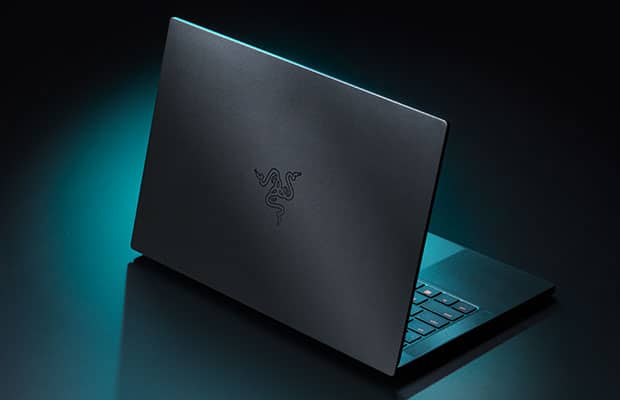
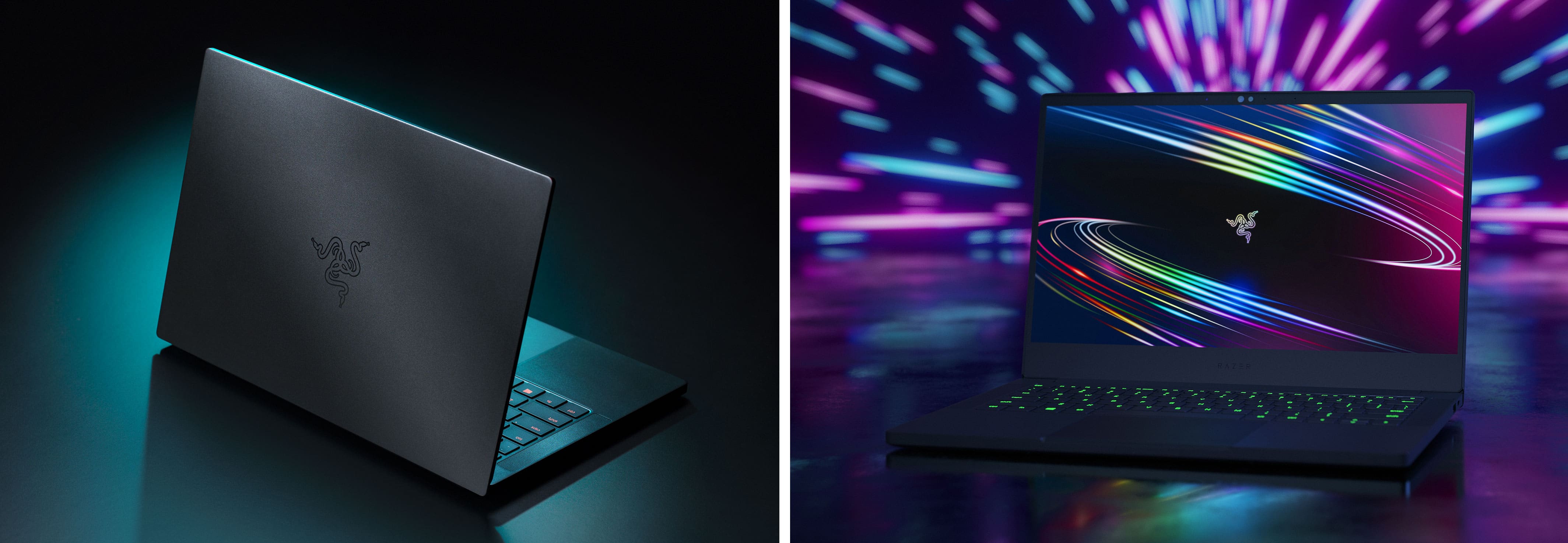
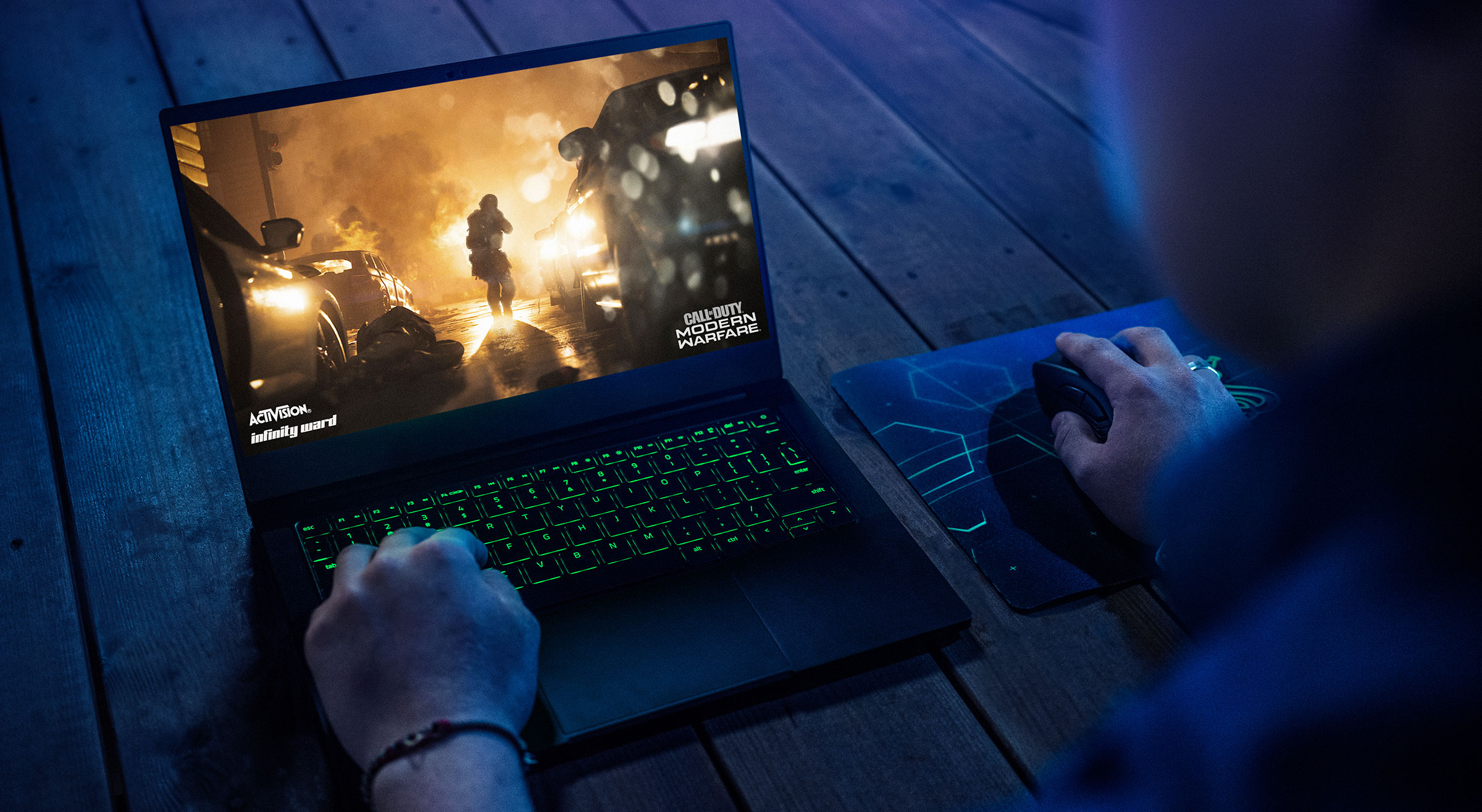






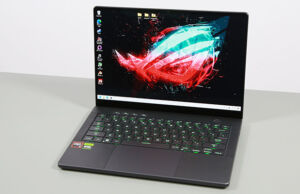
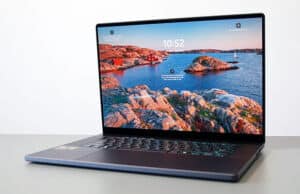



sybarite
April 23, 2020 at 3:57 am
Thank you for including the details about the wattage of the power adapter.
While power adapter size greatly impacts portability, very few laptop reviewers ever include info on their size.
I know 120W adapters are much smaller than 180W for example.
While the gamer market is focused on high end GPU like RTX 2060 and 2070, I'd much prefer a lower power GPU like 1650ti maxQ (35W).
A laptop designed around this would be much lighter and smaller, requiring less involved cooling. I'm a non-FPS gamer so i'm eager for this compromise.
Likewise I'd actually prefer the AMD "U" version CPUS (like 4800U) that only have a TDP of around 15 watts.
Perhaps I'm dreaming of an unlikely combo, an AMD low power consumption CPU with a moderate nvidia GPU.
Unfortunately they'd rather sell us heavy tank laptops with H version CPUS and super hot 2600/2600 GPU.
Andrei Girbea
April 23, 2020 at 11:03 am
I'd also like to see and AMD U + 1650Ti implementation. Working on a 4700U + MX350 review right now, the results are pretty interesting, but the MX250 is underpowered for decent FHD gaming even on low settings.
The Zeph G14 with the Ryzen 5 + 1650 50W should be closer to what you want, and fairly well priced when available. Still gets a 180W brick though, and still a 14-incher.
Rick
May 4, 2020 at 9:48 am
Amazing, I am looking exactly for the same combo (50W total TDP): a 15W Ryzen CPU + 35W Nvidia 1650ti max-q in a small form factor. The Zephyrus is something different: the TDP is 100W (35W CPU + 65W dGPU) and the fans stays always on.
I will not buy the Stealth, I hate to spend money on old technology. But I'm on the market for a new notebook, and this is EXACTLY what I want.
Claud
June 10, 2020 at 1:40 am
Hi Rick, what did you end up buying? I'm undecided between these two laptops as well and having some first-hand experience would be great.
Jake
May 31, 2020 at 6:39 pm
It's been about a month, when can we expect to see a review on the 2020 Razer Blade Stealth?
Andrei Girbea
June 1, 2020 at 10:35 am
We don't have a review unit yet
Claud
June 10, 2020 at 1:38 am
I'm also very interested on a side by side comparison. I'm more inclined to buy the razer blade stealth for the smaller footprint but I'm concerned about the possible longevity of the laptop that might be old in 1 or 2 years (and the 16×9 screen ratio).
On the other hand, it seems that the fan noise on the g14 can be fixed with a driver update. Is there any confirmation for that? Which one would you recommend to buy? I would use it as my primary (and only) device for working and gaming.
Thanks for the great review!
Andrei Girbea
June 10, 2020 at 10:29 am
I no longer have the G14 around, but yes, looks like the fans profile has been updated and silenced for low-level use.